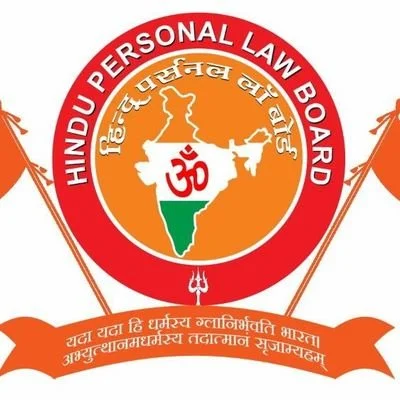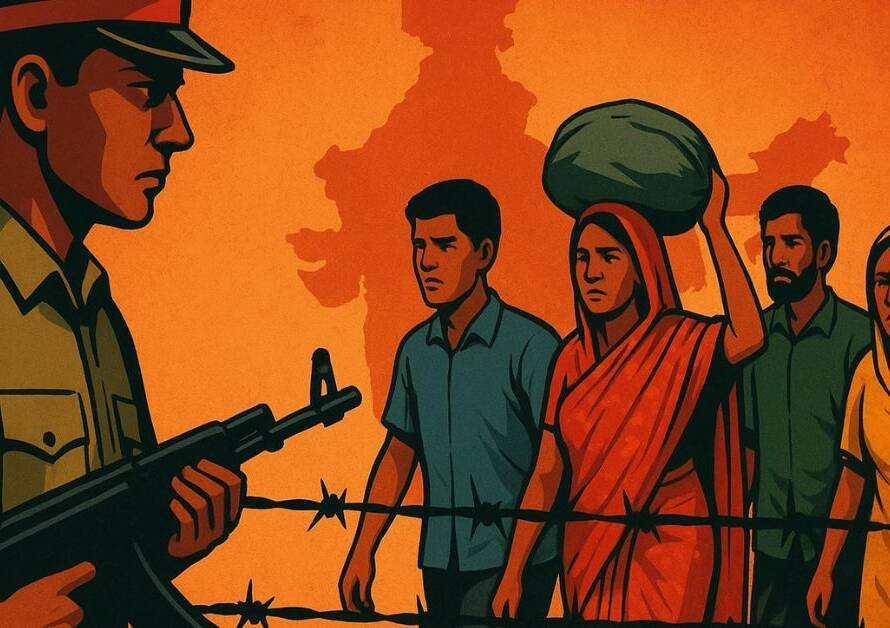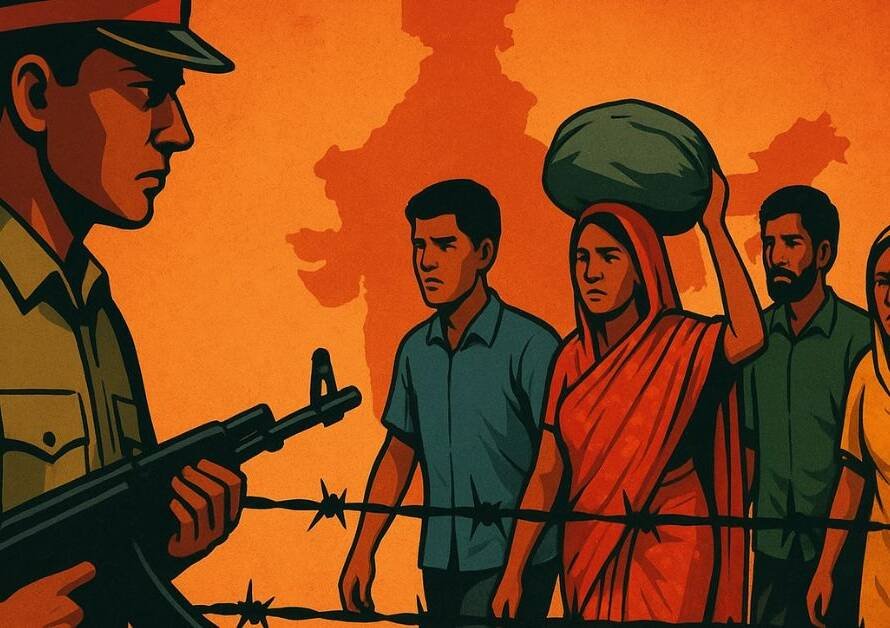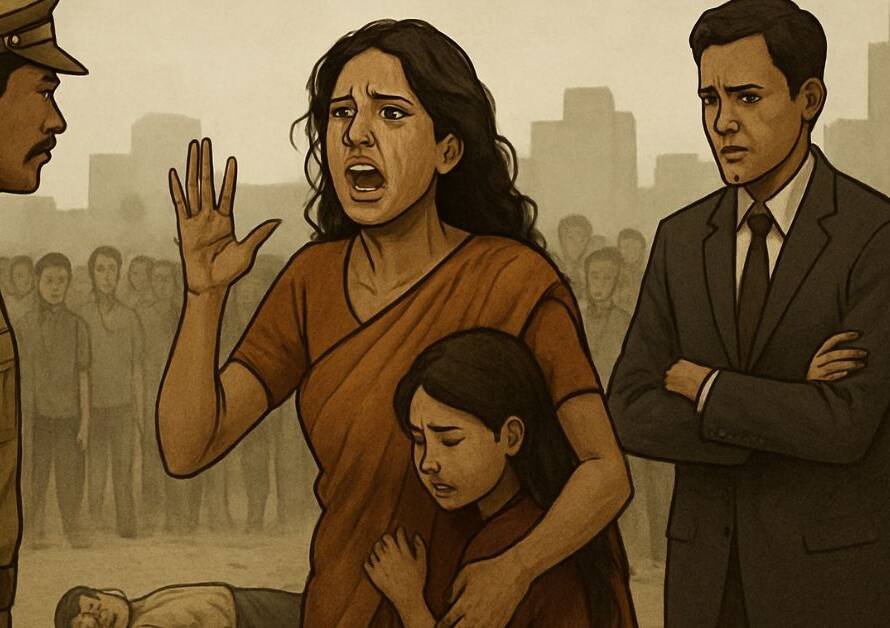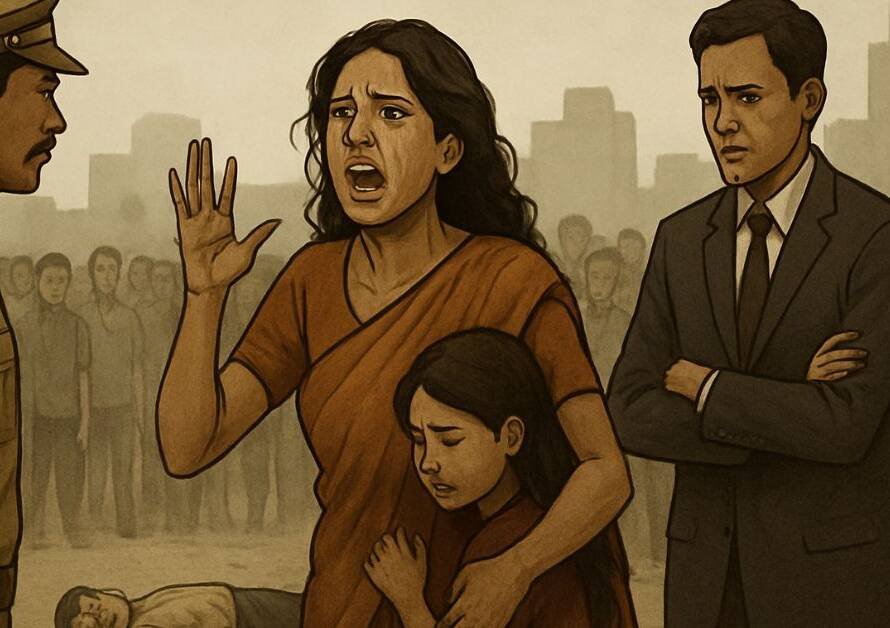- Progress Recap:
Membership Growth:
We have reached 346 members as of this morning, reflecting steady but slower-than-expected growth. While we’re on the right path, our goal was to cross 1000 members in the first couple of weeks, indicating that we must intensify our outreach and engagement efforts.
Core Message:
Our message has remained consistent: “Arise, Awake and Unite without barriers of caste, creed, sect, or language to save ourselves, our religion, and our democratic Hindu nation from the destructive actions of opposition parties, anti-Hindu, and anti-national forces.”
This message has gained traction, but it is crucial to amplify it further to reach larger sections of the Hindu community, especially those unaware or disconnected from our cause.
- Key Challenges Identified:
a) Slow Membership Growth:
We aimed to grow much faster, with a target of 1000 members within the first month. Despite steady growth, the slow pace highlights that our strategies to reach out to more Hindus need to be more aggressive, targeted, and efficient.
b) Division Within Hindu Society:
Internal divisions based on caste, community, language, and sects are deeply ingrained. While these divisions are weakening our unity, they have been skillfully exploited by anti-national and anti-Hindu forces to keep us fragmented and ineffective.
The solution lies in constant communication and education, reminding our community that the survival of Hinduism and India depends on our unity, not on internal differences.
c) Media Misinformation and Bias:
Certain sections of the media, driven by anti-national and global superpowers that feel threatened by India’s recent growth under the Modi government, are distorting facts to create a negative narrative. This is leading to confusion and disillusionment among common citizens, particularly those who may not have access to authentic information.
The lutyens media is consistently portraying the opposition’s version of events, highlighting only the negatives—fuel prices, inflation, unemployment—without acknowledging the substantial progress India has made in infrastructure, defense, international diplomacy, and entrepreneurship.
d) External and Internal Threats:
External Threats: Global forces and neighboring nations, envious of India’s rise as an economic and strategic powerhouse, have often supported and fueled anti-national elements to destabilize the country. Bangladesh’s recent genocide and the events in Jammu & Kashmir are stark reminders of how external forces are used to harm India.
Internal Threats: Anti-Hindu elements within the country, including religious jihadist groups and political entities, are actively working to destabilize the country for their gain. Their unity and single-minded focus make them more potent, despite being a minority.
e) Political Missteps and Voting Behavior:
The poor mandate given to the Modi-led BJP in the last Lok Sabha elections, due to divided Hindu votes, has emboldened the opposition and given them an opportunity to become more aggressive in their anti-national and anti-Hindu agenda.
The opposition’s strength comes from their unity and voting discipline: over 90% of their communities vote en bloc, following the guidance of their religious and political leaders. In contrast, Hindu voters are divided along caste, sectarian, and regional lines, and voter turnout among Hindus is low (<50%).
- Way Forward:
a) Aggressive Membership Drive:
Expand Membership: Our immediate goal should be to expand our membership base to 1000 within the next few weeks. To achieve this:
Encourage every existing member to recruit at least 5 new members.
Use social media platforms (WhatsApp, Telegram, Facebook, Twitter) more effectively for outreach, organizing discussions, and debates that draw attention to our cause.
Collaborate with pro-Hindutva influencers and public figures who can help amplify our message.
Focus on regional language content to appeal to diverse Hindu communities across the country.
Awareness Campaigns: Conduct targeted awareness campaigns addressing the importance of unity and mobilization among Hindus. This includes educational videos, flyers, infographics, and articles highlighting the common threat facing the community and nation.
b) Uniting Hindus Beyond Divisions:
Breaking Barriers: Actively communicate the need to rise above caste, creed, and sectarian differences. Reiterate that these divisions only serve to weaken us in the face of a united opposition that is working to destroy Hinduism.
Workshops and Discussions: Organize regular virtual and in-person discussions, workshops, and seminars across the country, educating members about the importance of unity in protecting Hinduism and India’s democratic structure.
Youth Outreach: Engage youth and students through value-based education programs and interactive sessions that explain the dangers of a divided Hindu society and the importance of being politically aware and united.
c) Countering Media Bias and Misinformation:
Establish Pro-Hindu Media Networks: We must develop a robust media network to challenge the biased reporting of mainstream outlets. This includes:
Creating independent news portals and social media handles focused on sharing factual information and debunking fake news.
Engaging with independent journalists and digital influencers to ensure the right information reaches the masses.
Highlighting Government Achievements: Actively promote the numerous achievements of the Modi government, such as:
National Security: Strengthening India’s defense forces and protecting the nation from external threats.
Economic Growth: Transforming India into an economic powerhouse with a booming startup ecosystem, creating millions of jobs.
Infrastructure Development: Improving roads, railways, healthcare, and digital infrastructure across India.
Foreign Policy: India’s growing influence on the world stage, shifting from a borrower to a provider in international politics.
d) Political Awareness and Voting Strategy:
Educate on Voting Power: Educate our members on the importance of voting strategically and en masse for pro-Hindu, pro-nationalist parties. Highlight the danger of fragmented Hindu votes, which has resulted in the opposition gaining undue power.
Mobilizing for Elections: Establish an election strategy that encourages Hindus to vote in large numbers. Organize voter registration drives and awareness programs in areas with low voter turnout.
Enlist the Support of Hindu Religious Leaders: Work closely with Hindu religious leaders to spread the message of unity and the need to support the Modi government in all upcoming elections. This is essential to counter the strong religious backing the opposition receives from their communities.
e) Defending Against External Threats and Communal Violence:
Self-Defense Programs: Organize self-defense workshops to prepare Hindus to defend themselves in the event of communal violence or terrorist activities. Ensure every community is well-equipped to handle potential threats.
Strategic Alliances: Form alliances with other nationalist groups and organizations that share similar goals to strengthen our ability to defend our nation from internal and external threats.
f) National-Level Coordination and Media Campaigns:
Coordinated Media Strategy: Create a well-coordinated media strategy to ensure our voice is heard loudly and clearly across the nation. This includes launching campaigns that highlight:
The dangers posed by anti-Hindu and anti-national elements.
The achievements of the Modi government in building a stronger, more secure India.
The importance of voting for nationalist and pro-Hindu parties in all elections, from local bodies to national-level elections.
- Call to Action:
Unity is Our Strength: Our survival as Hindus and as a nation depends on our ability to come together, transcending the divisions of caste, sect, and region.
Vote with Purpose: Hindus must vote en bloc, with a clear understanding that supporting the Modi-led government is crucial to safeguarding Hinduism, the nation’s integrity, and the future of generations to come.
Countering Misinformation: Each member has a role to play in spreading the truth. The biased narratives propagated by opposition groups must be countered by spreading the government’s achievements and debunking the falsehoods.
The Time to Act is Now: We cannot afford to delay. The opposition is gaining momentum, and every day that passes brings us closer to losing what we have worked so hard to achieve.
Together, we will protect our religion, our culture, and our nation. Jai Hind! Jai Bharat!
Yogi Ji’s statement reflects a bold and confident stance, addressing the challenges posed by radicalism and asserting India’s cultural and national identity. This approach, while controversial, aims to protect and promote the values that Yogi Ji believes are central to India’s integrity, unity, and harmony. His message emphasizes the importance of assimilation, respect for the nation’s traditions, and a call for non-interference in India’s established cultural and religious practices.
Expanding on Yogi Ji’s Message:
- The Courage to Defend National Identity: Yogi Ji’s words require immense courage. In a world where political correctness often overrides difficult conversations, his statements confront the realities many nations face due to the rise of radicalism and cultural incompatibilities. By openly challenging those who advocate for Sharia law and radical ideologies, he sets a precedent that non-Muslim countries around the globe need to protect their national values and legal systems without succumbing to external pressures. His message is clear: India will not accommodate ideologies that clash with its foundational principles.
- A Call for Global Leadership: Yogi Ji’s approach could be seen as a model for other non-Muslim countries grappling with similar issues. Countries across Europe, the Americas, and Asia are facing growing concerns about radicalism and cultural tensions due to immigration and differing ideologies. Yogi Ji’s bold declaration that India will not change its culture or laws to suit outsiders could inspire other leaders to take similar stands, ensuring that immigrants respect the host country’s values rather than imposing their own.
- Integrating, Not Dividing: His statement urges Muslims who wish to live under Sharia law to seek residence in countries where such laws are already in place. This call for cultural and legal integration emphasizes that anyone coming to India must adapt to its traditions, language, and lifestyle rather than expect the nation to accommodate foreign ideologies. Yogi Ji reminds everyone that India has its rich tapestry of religions, such as Sanatan Dharma, Sikhism, Buddhism, and Jainism, which form the cultural backbone of the country. He makes it clear that the expectation is for everyone to respect these values.
- Protecting India’s National Language and Heritage: Yogi Ji’s emphasis on the use of Hindi and Sanskrit is a reminder that language is central to national unity. In urging residents to learn Hindi and Sanskrit, he reflects on the importance of linguistic unity as a tool for social cohesion and national identity. While acknowledging the diversity of languages, Yogi Ji affirms that India’s linguistic heritage must be preserved, and residents should align with the country’s cultural fabric.
- A Reaffirmation of Religious Freedom – With Boundaries: Yogi Ji clarifies that while India respects religious freedom, this freedom comes with boundaries. India is a secular state, but the nation’s roots lie in its long-standing spiritual traditions of Sanatan Dharma, Sikhism, Buddhism, and Jainism. He reinforces the idea that India is open to religious practice, but this practice should not interfere with the lives of others. Yogi Ji’s statement that Muslims are free to practice their faith peacefully—without creating disturbances or demanding preferential treatment—highlights a balanced approach to freedom of religion.
- Addressing Noise Pollution and Public Spaces: The specific request not to pray in public spaces or create noise pollution is an assertion that religious practices should respect the rights of others. Yogi Ji’s message resonates with many people who believe in maintaining public order and limiting disruptions. His insistence on practicing religion quietly, whether at home or in mosques, ensures that all citizens, regardless of faith, can live in peace without impositions.
- Respecting National Symbols: Yogi Ji’s firm stance on respecting national symbols—such as the flag, the national anthem, and Indian traditions—reinforces the idea of unity and patriotism. In his view, anyone who objects to these fundamental aspects of Indian life should reconsider their place in the country. This call for respect of national symbols echoes a broader message of allegiance to the nation above all else.
- Upholding India’s Cultural Sovereignty: At the heart of Yogi Ji’s message is a defense of India’s cultural sovereignty. He affirms that India’s civilization, history, and traditions are non-negotiable, and those who live in the country must respect its ethos. His message reflects the belief that a nation’s strength lies in its ability to preserve its cultural heritage, even while embracing modernity.
Conclusion:
Yogi Ji’s statements, while provocative, speak to a growing sentiment in many nations struggling with the challenges of immigration, cultural integration, and radicalism. His message is one of strong national identity, cultural preservation, and the need for unity in diversity—asserting that while India respects all religions, it will not compromise its traditions or allow external ideologies to disrupt its way of life.
In urging other nations to adopt similar stances, Yogi Ji emphasizes the importance of leadership that is unafraid to defend national values. His call for respect, unity, and cultural integrity is a message that resonates far beyond India, especially in an increasingly globalized world where national identities are being tested.
To strengthen your document, here are relevant examples and case studies that can be included to illustrate the challenges and strategies discussed:
- Slow Membership Growth:
Case Study: Rashtriya Swayamsevak Sangh (RSS) Early Days
Example: When RSS was founded in 1925 by Dr. Keshav Baliram Hedgewar, it initially struggled to attract members and gain recognition in Indian society. It took years of grassroots organizing, targeted outreach, and focus on building a disciplined network of volunteers to expand its membership.
Lesson: Building a strong organization takes time, persistent effort, and a structured approach to engage individuals at the grassroots level. Consistent messaging and a clear sense of purpose gradually attract more members.
- Division within Hindu Society:
Example: Ram Janmabhoomi Movement
Case Study: The Ram Janmabhoomi movement, spearheaded by the Vishwa Hindu Parishad (VHP) and RSS, faced considerable internal challenges within the Hindu community. There were divisions based on caste and region, but the movement leaders emphasized the shared cultural and religious significance of Lord Ram across communities, helping unify diverse groups.
Lesson: Unifying messages, cultural symbols, and common goals (like Ram Janmabhoomi) can be powerful tools to overcome divisions within Hindu society. Building on shared values and narratives helps to bridge divides and strengthen collective identity.
- Media Bias and Disinformation:
Example: Gujarat 2002 Riots Coverage
Case Study: During and after the 2002 Gujarat riots, there was widespread international and domestic media coverage that was heavily criticized for bias. Various reports selectively focused on Hindu actions, often ignoring the prior violence against Hindus or the efforts by the state to control the situation. The media’s narrative portrayed a one-sided view, impacting global perception and creating internal divisions within India.
Lesson: Media can shape narratives by focusing selectively on events. It is crucial for Hindu organizations to create their own media channels or support independent journalists who present a more balanced and truthful account. Platforms like OpIndia have emerged to counter biased narratives with factual reporting.
- External and Internal Threats:
Example: Jammu & Kashmir Insurgency
Case Study: The insurgency in Jammu & Kashmir, backed by Pakistan’s ISI and other external forces, led to the mass exodus of Kashmiri Pandits in the late 1980s and 1990s. This marked a significant threat to the Hindu population in the region. Despite internal political divisions and a lack of initial unity, the Hindu community has been working towards highlighting this issue on national and global platforms.
Lesson: External threats, combined with internal political weaknesses, can cause significant harm to communities. A united effort to highlight these dangers and seek governmental support is critical, as seen in the increased awareness of Kashmiri Pandit issues in recent years.
- Political Mistakes and Voting Behavior:
Case Study: 2019 Lok Sabha Elections
Example: In the 2019 Lok Sabha elections, the opposition parties, particularly the Congress, attempted to consolidate minority votes while Hindus were often divided based on caste and regional loyalties. Despite this, Modi’s call for “Sabka Saath, Sabka Vikas” and a unified pro-nationalist message succeeded in bringing a large portion of Hindus together under a common goal of national progress and security.
Lesson: Divisive strategies by opposition parties that rely on caste and regional politics can be countered with a strong, unifying nationalist agenda that appeals to the broader Hindu identity. Clear messaging and disciplined voting behavior are key to electoral success.
- Hindu Religious Leaders’ Support:
Case Study: Kumbh Mela 2019
Example: During the 2019 Kumbh Mela, various Hindu religious leaders came together and openly supported the Modi government for its pro-Hindu stance, development initiatives, and strong national security policies. The Mela provided a platform to unify Hindus on religious and political fronts.
Lesson: Religious leaders have significant influence in mobilizing the masses. Their support, when coordinated with a clear political and social agenda, can significantly boost unity and resolve within the Hindu community.
- Communal Violence and Self-Defense:
Case Study: 2020 Delhi Riots
Example: In the 2020 Delhi riots, a significant portion of the violence was targeted against Hindu neighborhoods. Many Hindus organized themselves into local defense groups to protect their families and properties when law enforcement was overstretched. Such community-level preparedness helped in preventing further loss of life and property.
Lesson: In times of communal violence, having a self-defense mechanism and organized community response can be crucial in safeguarding vulnerable groups. Training and preparedness can mitigate damage and prevent further violence.
- Voting Strategies and Political Awareness:
Example: Bihar Elections 2020
Case Study: In the 2020 Bihar state elections, the BJP-JD(U) alliance strategically focused on grassroots-level campaigning and targeted outreach to ensure that traditional Hindu voters, including marginalized communities, came out in large numbers to vote. This strategy paid off with a decisive victory, despite opposition efforts to divide Hindu voters based on caste.
Lesson: A well-organized political awareness campaign, coupled with voter registration drives and outreach to rural and semi-urban areas, ensures higher voter turnout and prevents fragmentation of the Hindu vote.
Conclusion:
These examples and case studies illustrate the importance of unity, political awareness, self-defense, and media engagement. Learning from historical movements, elections, and communal challenges can guide the National Hinduism Board in its future strategies to overcome internal divisions, counter external threats, and strengthen Hindu unity for the protection of the religion and the nation.
These lessons emphasize the importance of a multi-faceted approach—grassroots organizing, political discipline, media outreach, and self-defense mechanisms—to effectively safeguard Hindu interests and work toward a stronger, unified India.
Your next steps for strengthening the National Hinduism Board and advancing its objectives can be divided into four key areas: membership growth, community unity, political strategy, and media outreach. Here’s a step-by-step breakdown with actionable items:
- Membership Growth:
Organize Targeted Recruitment Drives:
Action: Focus on online and offline strategies. Leverage WhatsApp groups, Facebook pages, Telegram, and other social media platforms to spread awareness.
Target: Collaborate with local temple committees, religious gatherings, and cultural organizations to expand the membership base.
Example: Look to how RSS and BJP have built networks through grassroots outreach in local communities and religious congregations.
Referral Program:
Action: Create a system where current members are encouraged to bring in more members. Offer rewards or recognition for the top recruiters within the group.
Target: Aim to convert at least 50% of existing members into active recruiters.
Create Engaging Content:
Action: Post powerful, motivational content, including graphics, videos, and testimonials from group members. Encourage members to share widely.
Target: Reach out to influencers who support your cause to boost visibility.
Regional and Language-Based Chapters:
Action: Create chapters in different regions and focus on language-based communities to cater to their specific needs.
Target: Involve local leaders to make the campaign more relevant and accessible. - Strengthening Community Unity:
Build Inter-Caste and Inter-Community Unity:
Action: Promote messages that emphasize unity among Hindus beyond caste, language, or regional differences. Organize events that celebrate shared festivals, rituals, and traditions to foster a common Hindu identity.
Target: Ensure that at least 10-15% of your member base consists of diverse caste groups.
Promote Hindu Cultural Symbols and Heritage:
Action: Organize cultural events, webinars, and public gatherings focused on Hindu heritage, temple preservation, and social causes like charity and seva (selfless service).
Example: Ram Janmabhoomi movement was successful because it rallied people across caste and sect lines under a common cultural cause.
Workshops on Political Awareness and Hindu History:
Action: Educate members about the contributions of Hindu kings, saints, and thinkers who have historically united communities. Highlight how external and internal threats have been combated.
Target: Organize workshops to train members on speaking about Hindu unity in their local communities. - Political Strategy and Voting Awareness:
Mobilize Voting Power:
Action: Encourage members to not only vote but also bring in their family and friends. Set up local groups to ensure people are registered to vote.
Target: Increase voter turnout to 80-90% among your member base.
Example: The Muslim community’s block voting strategy is an example of how a united voting effort can influence political outcomes. A similar effort in the Hindu community could yield significant results.
Publicize the Achievements of the Modi Government:
Action: Regularly share statistics, facts, and figures on the economic growth, international respect, and defense capabilities India has developed under the BJP government.
Target: Ensure these messages reach not only your group but also the larger Hindu population through social media and local influencers.
Debunk Opposition Propaganda:
Action: Prepare rebuttals and counter-narratives for common propaganda and false claims by opposition parties. Organize fact-checking sessions to debunk myths about the government.
Example: Just as fact-checking platforms have helped counter fake news, use your group’s platform to inform members about the truth behind the negative opposition narratives. - Media Outreach and Narrative Control:
Develop a Pro-Hindu Media Platform:
Action: Invest in a dedicated media wing for the group. Start small by creating an online platform (website, YouTube channel, blog) where you can publish articles, interviews, and reports that represent the Hindu nationalist perspective.
Target: Aim to produce at least 2-3 articles or videos per week initially, ramping up to daily content.
Collaborate with Like-Minded Influencers:
Action: Partner with prominent Hindu intellectuals, spiritual leaders, and social media influencers who align with your goals. Invite them for interviews, podcasts, and discussions on your platform.
Target: Reach 1 lakh (100,000) views on media posts within the first 6 months.
Campaign to Highlight the Bias of Mainstream Media:
Action: Regularly release posts that expose the biases and false narratives of the mainstream media. Encourage members to share these widely on their networks.
Example: Just as platforms like OpIndia counteract biased narratives, your group can take a similar role in advocating for truth and accountability in media. - Prepare for Community Defense and Crisis Management:
Self-Defense Training Programs:
Action: Organize physical training camps in local areas that teach self-defense techniques and strategies to handle communal violence. Engage ex-servicemen or trainers to guide members.
Target: Aim for at least 30-40% of your membership to undergo basic self-defense training.
Example: Local Hindu communities in regions like Jammu and Kashmir have set up defense groups during times of conflict to protect themselves.
Rapid Response Networks:
Action: Build a rapid communication network that allows immediate mobilization of members during crises or communal tensions. Use tools like Telegram and WhatsApp for emergency alerts.
Target: Establish a system where every community can be alerted within minutes if any external threat emerges.
Legal and Social Advocacy:
Action: Form a legal cell within the organization to offer support in case of wrongful arrests, communal attacks, or unfair treatment. Offer assistance in filing FIRs, legal cases, and providing counsel.
Target: Ensure your group members are aware of their legal rights and how to defend them during periods of unrest.
- Engaging Religious and Spiritual Leaders:
Partnerships with Spiritual Leaders:
Action: Engage and partner with influential Hindu religious leaders like Jaggi Vasudev, Ramdev, and others who can mobilize their vast followings for social and political causes.
Target: Involve at least 10 prominent spiritual figures who can help promote the group’s objectives.
Temples as Community Centers:
Action: Use temples as focal points for meetings, cultural events, and political discussions. Work with priests and temple management to encourage regular gatherings and participation in local initiatives.
Example: Religious gatherings such as the Kumbh Mela have been used historically to unify diverse sects and castes under one Hindu banner. - Long-Term Vision and Plan:
Set Clear Objectives:
Action: Define specific, measurable, achievable, relevant, and time-bound (SMART) goals for your group. For example, setting milestones such as reaching 1,000 members by the next month or organizing 10 public events in the next quarter.
Political Representation:
Action: Support candidates in local and state elections who align with your values and promote Hindu unity and national integrity.
Target: Aim to have a significant influence in local elections, building a grassroots movement that can eventually impact national elections.
Create a Think Tank:
Action: Develop a research and policy analysis wing that produces thoughtful articles, papers, and policy proposals on issues affecting the Hindu community. This will lend intellectual weight to your cause and make your organization more credible.
Conclusion:
The next steps for the National Hinduism Board involve targeted growth strategies, uniting the Hindu community, building a strong media presence, preparing for defense in times of crisis, and engaging with political and spiritual leaders. By creating a strong and united network with clear objectives and consistent efforts, the group can become a powerful force in safeguarding Hindu interests and promoting national unity.

